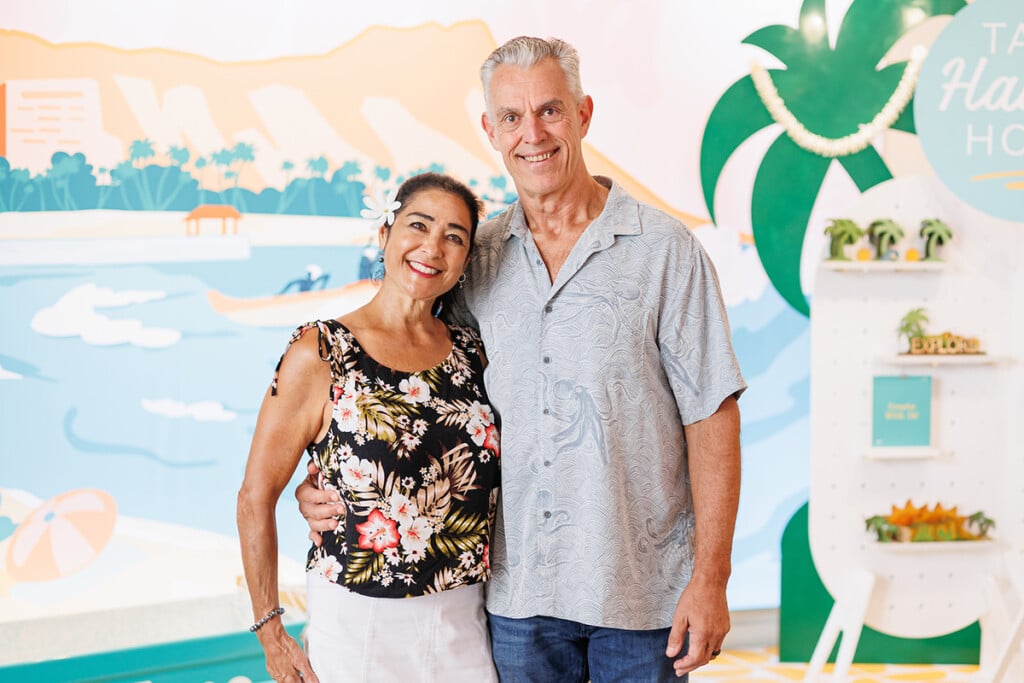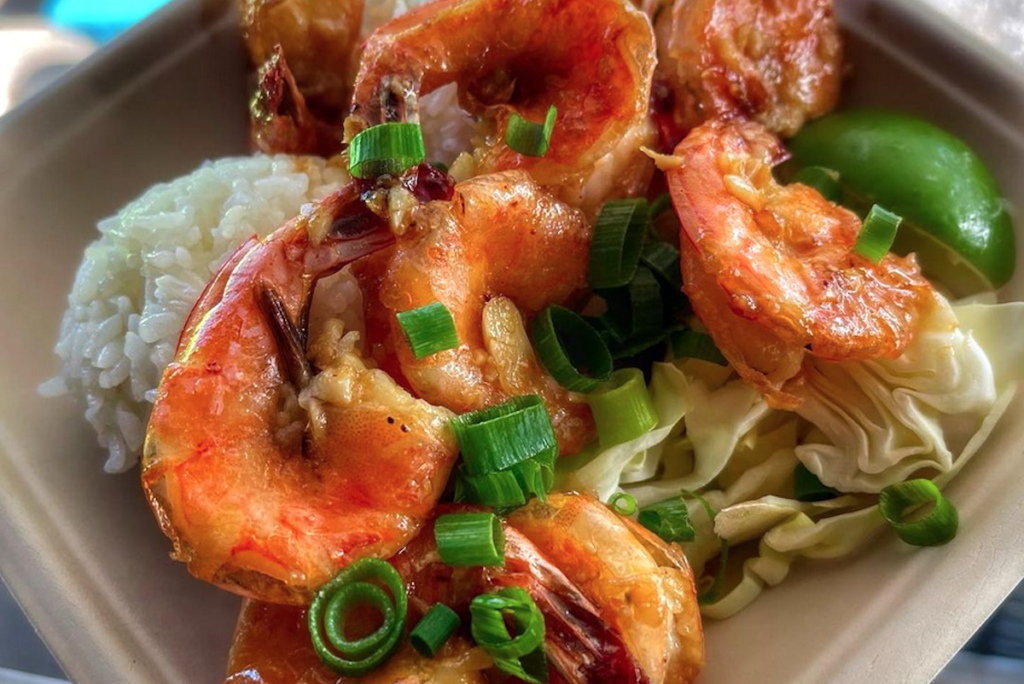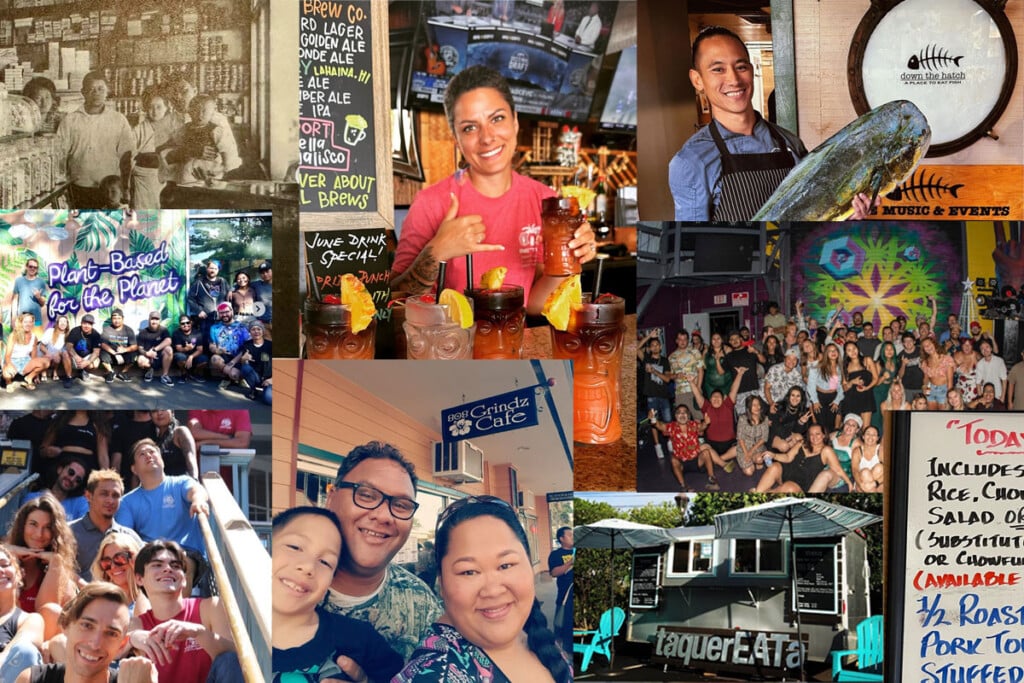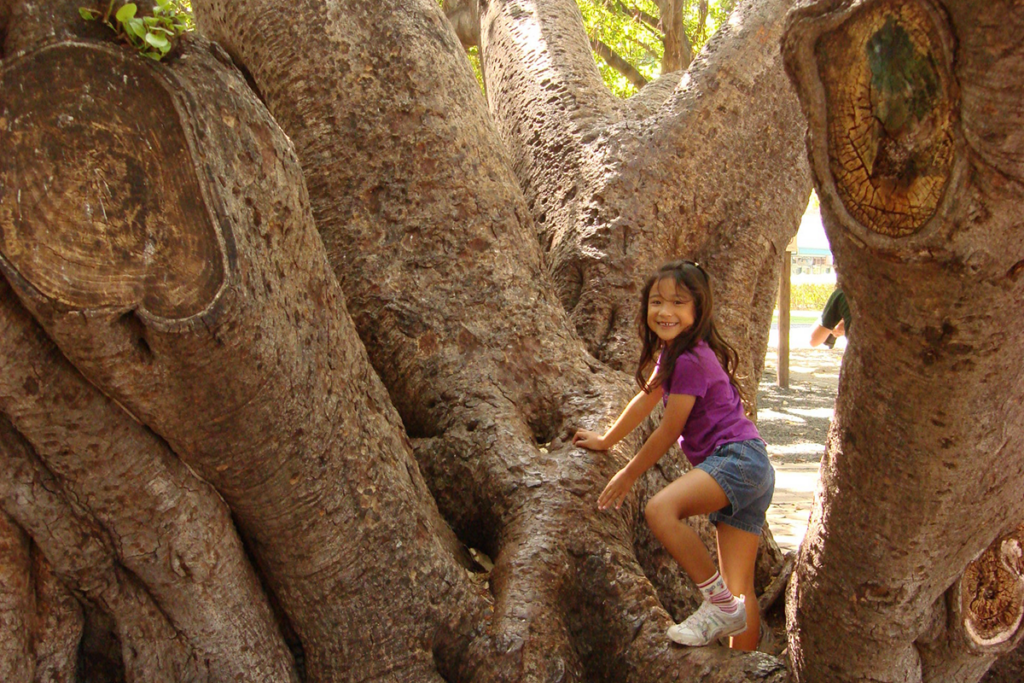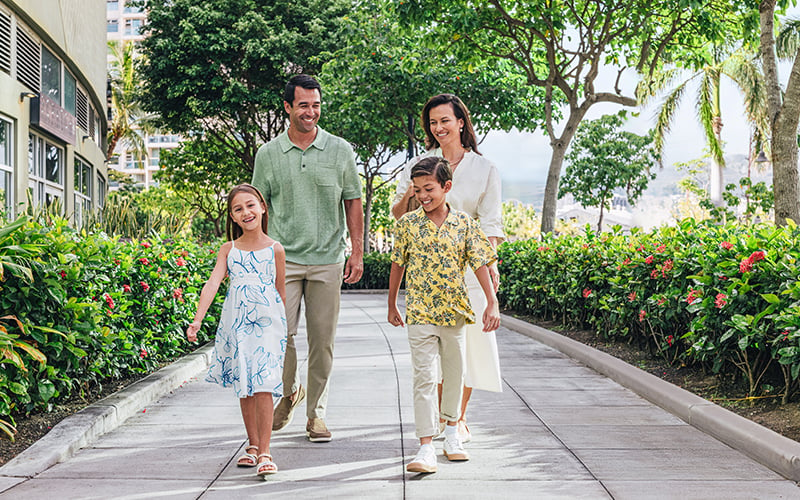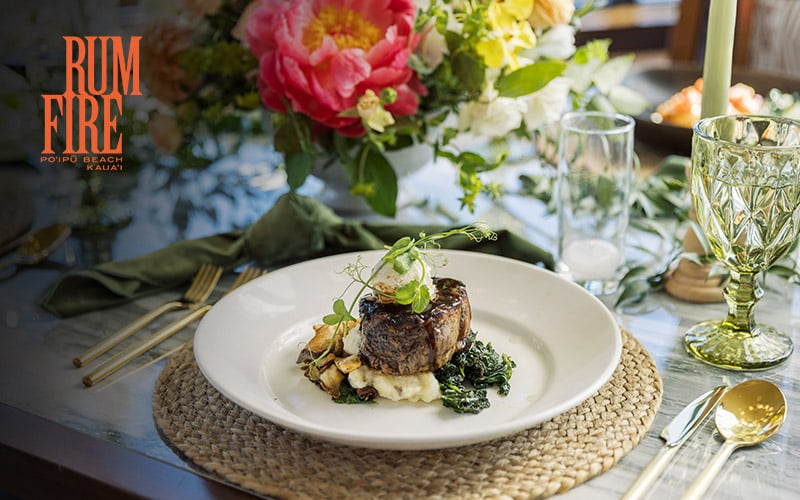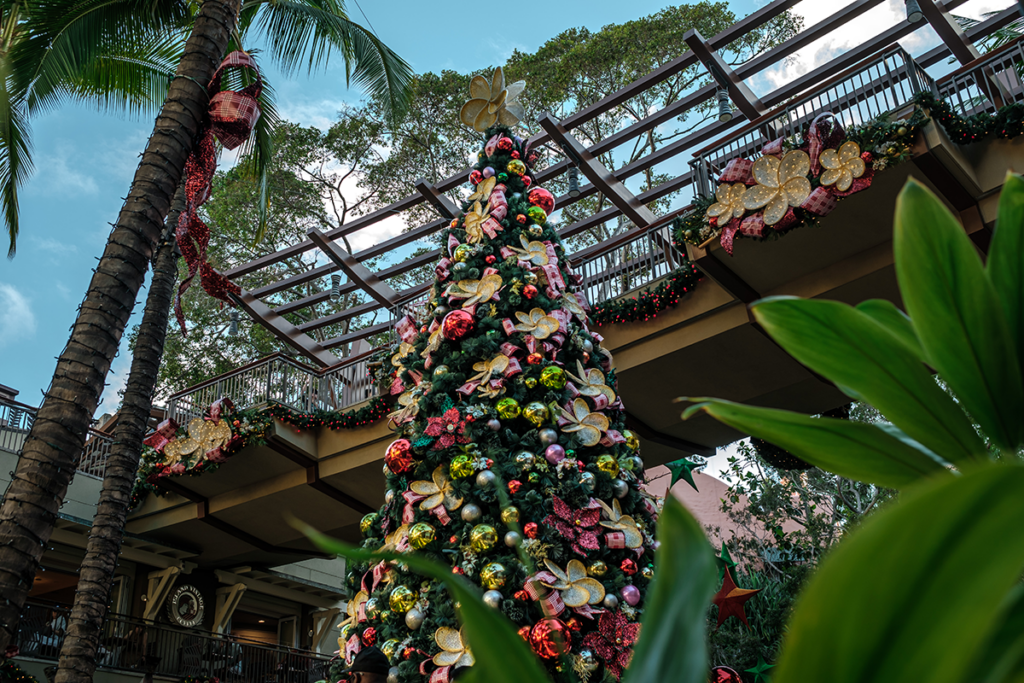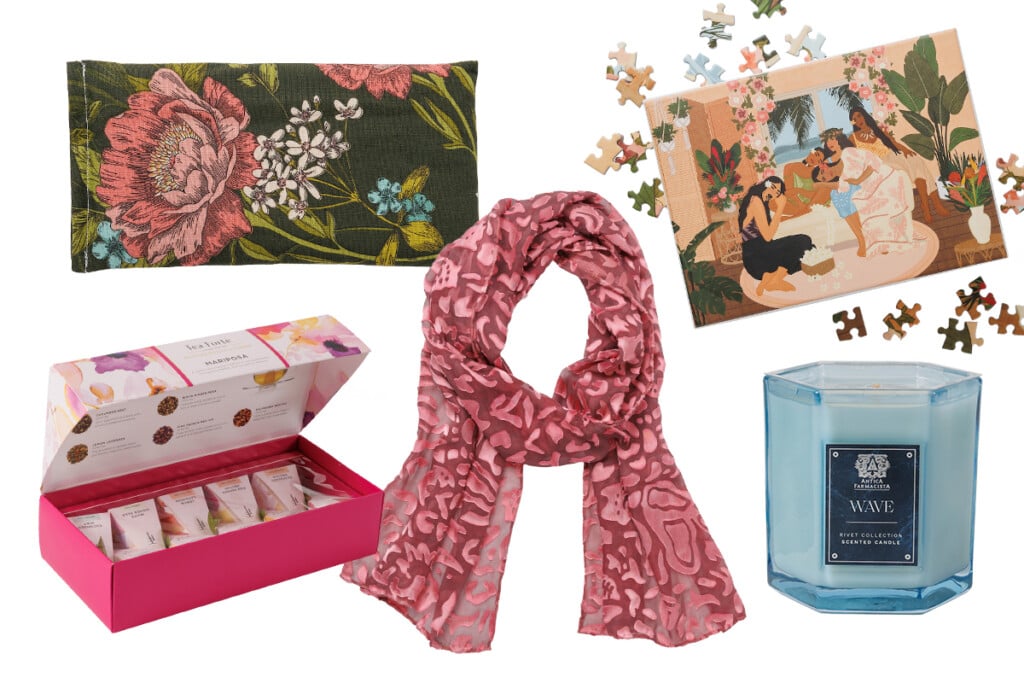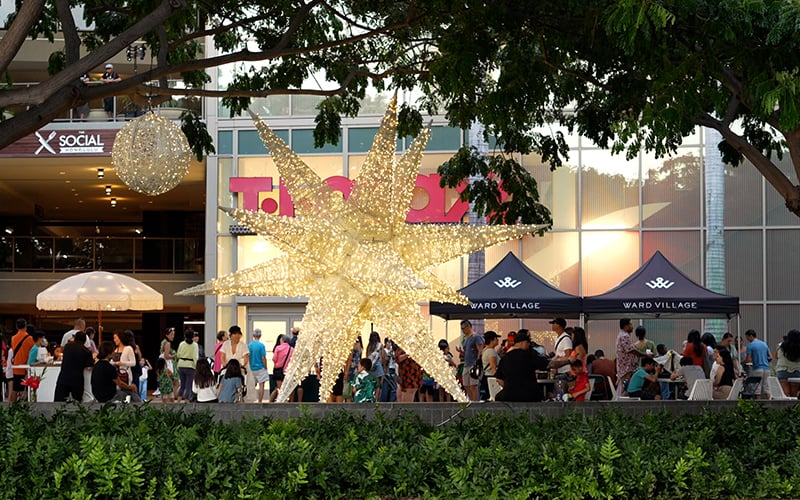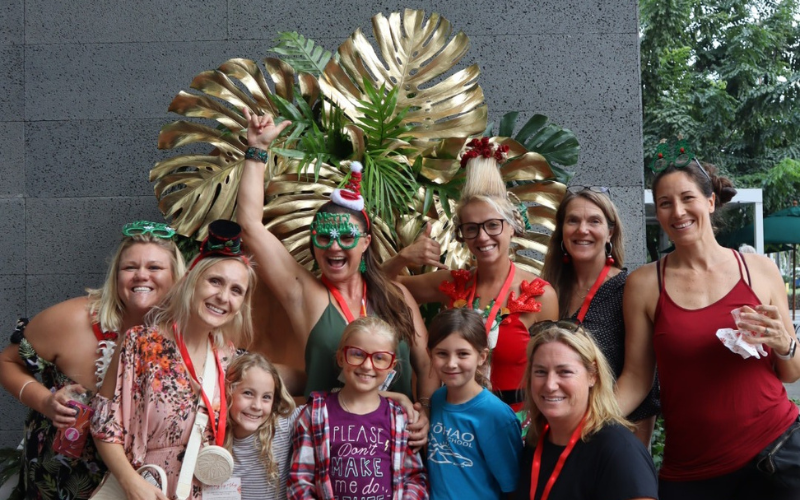The Maui Wildfires, A Year Later: Part 1
We follow up with Lahaina wildfire survivors—husband-and-wife restaurateurs and a Hawaiian cultural practitioner—to see how they’re faring.
Editor’s Note: A year ago, four survivors deeply anchored to Lahaina told us their stories and hopes. Their stories, published in our October 2023 issue, are available online. We followed up with husband-and-wife restaurateurs, a Hawaiian cultural practitioner, a Buddhist priest and a teacher of ‘ōlelo this week to see how they’re faring.
Here’s Part 1, about Qiana and Michele di Bari of Sale Pepe, and Namea Hoshino, a cultural monitor with Nā ‘Aikāne o Maui. Find Part 2 here.
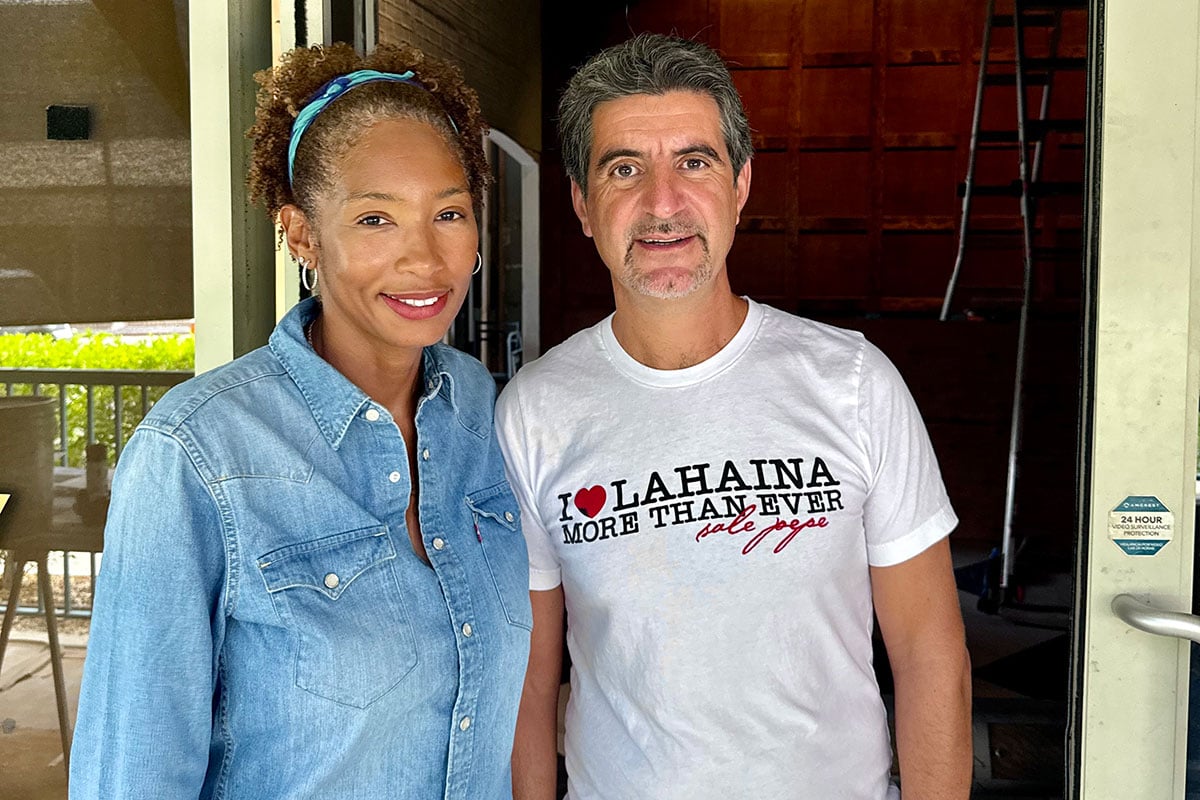
The Restaurateurs
Qiana and Michele di Bari lost Sale Pepe, their soulful Italian restaurant on Front Street, and Pacific’O, which they managed. Now they’re rebuilding Sale Pepe in Lahaina. Read their original story here and our follow-up below.
Qiana di Bari: The good part is that right after the fire, our friends offered us the space that Alchemy Maui had just left. It’s up in Emerald Plaza, right on the edge of the fire zone. That was a blessing right from the beginning, but it took us a few months to get our bearings. On Jan. 1, we took the space over. I think it will be open sometime October.
We’re having a lot of fun with the redesign and the creation of the space, making it as beautiful as Lahaina deserves. But building out the kitchen has been challenging. We’re waiting on the grease trap permitting, and the cost of the grease trap alone is our entire GoFundMe fund. We’re cobbling together funds from insurance money, GoFundMe and SBA loans. But we believe in this project, and we just want to go back. It would be a lot easier to pick up and go to an existing space in Kihei or Wailea. But we really want to give back to Lahaina what it gave to us. And it’s not over.
Michele di Bari: Not only that, but I don’t know if I can be anywhere else because Lahaina is where we belong. The community gave so much to us since the day we opened, then with COVID, they never let us down. We have always been supported. The support from the community is incredible.
Since we are closed, I have been taking the time to go to different regions [in Italy and taking] classes learning everything that has to do with bread and pizza. One week Venice, one week Piemonte, one week in Milano, 10 hours every day just baking and learning new technique, new type of dough.
Qiana: [We haven’t moved home yet,] but we go back every couple of days. The new restaurant space being just across the road makes that a lot easier, too. We were taking the time to repaint and make things a little brighter and a little fresher for whenever we go back. Because the home dies if you’re not there, it starts to fade, you know. So we would just try to hang on and keep it alive.
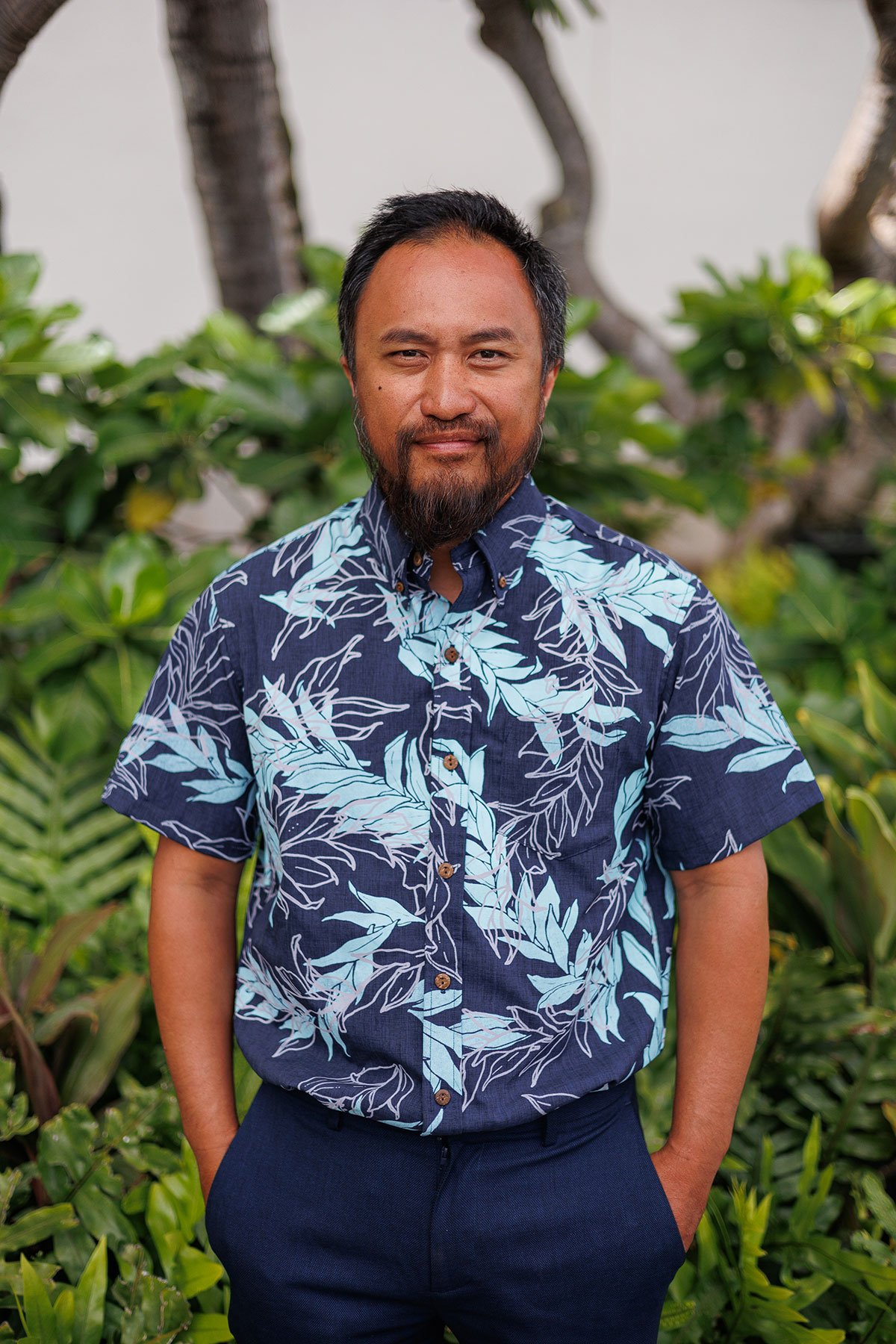
The Cultural Practitioner
Lahaina has been home to generations of Namea Hoshino’s family. Now, as he works to reclaim it, Hoshino struggles with a new reality. Read his original story here and our follow-up below.
I oversaw some of the cleanup from the beginning with the EPA and the Army Corps—I was one of the few individuals that was partaking as a cultural monitor under Nā ‘Aikāne o Maui. It was difficult to see a lot of the homes that I grew up around, of our family friends, some of our ‘ohanas, being cleared out—it was emotional times for a lot of families and for me.
I’ve been living in Wailuku with my partner. It feels weird because on the west side, there was a massive fire, but when you come back here, it feels like it never happened. People still moving on with their lives. People are still going to work.
I miss being home [in Lahaina]. Home is one place that keeps you grounded and you appreciate being around your family. But now you have all your cousins, your aunties, uncles, grandparents, all scattered. I miss Lahaina so much.
When I started working as a cultural monitor, I didn’t want to stay in Lahaina and be a burden to my family. In the beginning, I was working seven days a week, and then I would drag back and forth from Wailuku to Lahaina. It kind of kills you inside because you want to stay as long as you can. But a couple months ago, I started to stay there because I just wanted to be around my family. I needed to be around as best as I can.
I fear that a lot of our families are going to have hard times these years. A lot of us won’t have the money to rebuild. I told myself, I’m not backing down—we’re gonna go back. But with a lot of families that I’ve talked to, they’re undecided. There’s no place for them to come home to.
More coverage of Maui a year later
